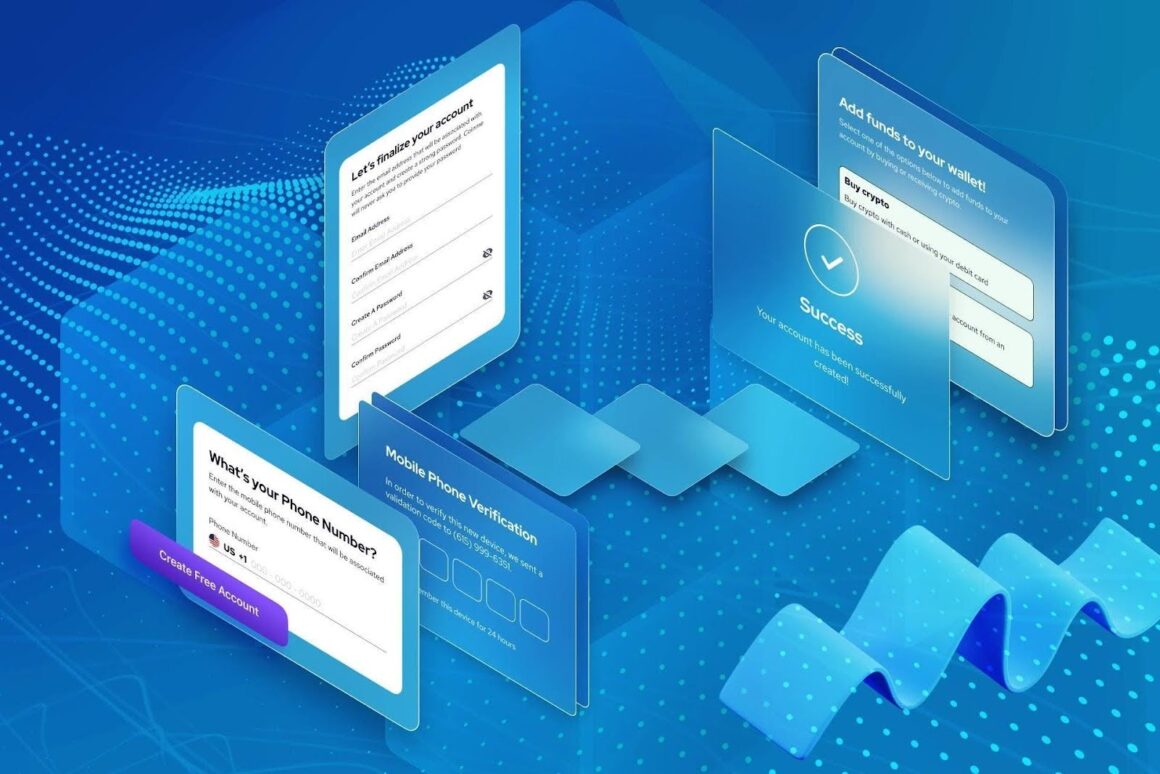With a growing more complex digital ecosystem and users demanding quicker, more dynamic experiences, the answer is no longer traditional web architecture. But with JAMstack and headless CMS working in tandem, an entirely new, cutting-edge approach exists for modern website creation and delivery. These two concepts complement each other to form a decoupled approach from the front-end and back-end of content delivery, offering a practically scalable, malleable development experience that ensures websites will be future-proofed. They are the cornerstones of performance, safety, security, and developer-friendliness that predict what technology will come next.
Where does JAMstack fit in the web?
JAMstack is a web development architecture based on a modern web development philosophy. It stands for JavaScript, APIs, and Markup and is specifically designed to create websites that are faster, more secure, and easier to scale. The principle of JAMstack is to decouple services instead of relying on a traditional monolithic application; for example, Static Site Generators and client-side JavaScript can generate a dynamic website while pulling in data from APIs. Enterprise headless CMS by Storyblok integrates seamlessly with JAMstack workflows, providing structured, API-driven content that can be delivered to any front end. Pre-rendering content that’s served up via a CDN makes websites faster loading and less crash-prone. In addition, JAMstack facilitates composable tools and services, giving project teams the ability to choose best-of-breed technology to suit the needs of each part.
Why is a Headless CMS the ideal solution for JAMstack?
A Headless CMS is the ideal solution for JAMstack because it relies on APIs to structure content without strictly binding it to a specific presentation layer. This content-first, presentation-agnostic approach means that on JAMstack sites, developers can easily access and render the data using popular JavaScript frameworks like Next.js, Nuxt, or Gatsby. Since the Headless CMS delivers the information via APIs, project teams can enjoy quicker deployment cycles because it’s easier to leverage that content across web, mobile and IoT applications. This Headless CMS solution allows marketers and content creators to control who has access to this information from one centralized hub while the development team enjoys unfettered access and freedom on the front end at the same time decoupling the dependence of content and code.
What benefits does this offer in performance and scalability across all projects?
Of all the pillars against which JAMstack architecture thrives, performance is one of the strongest. For example, since so much of a site is pre-rendered with a CDN providing access to so many portions, less reliance on servers exists while load time decreases significantly. When a Headless CMS gives power to the architecture, there are no site-wide rebuilds or back-end adjustments needed every time content changes. The development team should regenerate certain static assets as they see fit or pre-render adjustable pieces and they can happen on the fly. This promotes greater performance adjustments where scalability becomes easier across all projects smaller scaling projects like internal blogs to larger scaled eCommerce-enabled sites. The faster the experience for users is, the better it scales once users hit the site.
Security Benefits of Decoupled Architecture
Traditional CMS platforms couple front-end and back-end logic, which means the development team is already exposed to an attack surface from day one. With JAMstack utilizing a headless CMS this does not happen. The architecture is far more secure out of the box since a site is served statically, and it never touches databases or back-end logic while running. This negates vulnerabilities such as SQL injections or hacks to plugins. Furthermore, the APIs can be secured and throttled independently; all that remains is up to static hosting solutions. There are fewer dependencies on web servers and smaller attack surfaces JAMstack and a headless CMS provide a more secure experience for modern web applications.
Enabling Omnichannel Access to Content
The increasingly digital-first brand engagement approach means that consumers now have many access points to brands websites, web applications, mobile applications, smart watches, voice modules, etc. A headless CMS situates brands to accommodate such access-point realities, relying on APIs to serve out content. The same structured content can be distributed across multiple front-ends in real-time. Whether the product details on an e-commerce web portal or driving the notifications seen on smart watches, a headless CMS within a JAMstack solution supports the multifaceted access to brand content that companies need to succeed.
Accelerating Development Speed and Team Autonomy
JAMstack projects operate already under the tenets of today’s dev workflows Git-based version control, CI/CD pipelines, modular component reuse, etc. Thus, pairing with a headless CMS only maximizes productivity levels as development teams no longer need to compromise with content teams. Marketers can create and push content changes without waiting for dev sprints. Developers can ship features and pages without disrupting editorial functions. When development projects are not reliant on time-consuming content-based dependencies, everyone works faster and ships sooner without headaches. Everyone can adopt an only forward mentality shipping faster means that they can iterate more often by scaling and innovating without bottlenecks.
SEO & Performance Optimization Advantages
Years ago if not the case now Google and other search engines don’t read JavaScript-heavy sites. However, that’s in the past oriented to non-optimized sites. Yet with JAMstack and a headless CMS architectural make-up, SEO is always an option. First, pre-rendered static pages mean that loading time is instantaneous the first factor search engines rely upon for volume. Second, the content output from the headless CMS can be placed into necessary metadata, schemas, and SEO-friendly URLs. Third, they run on React, Angular, or Vue, any of which provide server-side rendering or static site generation. These decisions regarding the architecture allow for JAMstack applications to load faster than their non-headless counterparts and be more search-friendly. Therefore, it’s not just a good decision technically but strategically for branding and discoverability.
Compatibility with Digital Transformation & Future-Ready Architecture
Technology moves fast and businesses need architecture that moves faster. By nature, JAMstack and headless CMS are future-ready; because they are decoupled and modular, organizations can implement any number of frameworks and APIs now or in the future without having to start over with a new stack. For example, if ChatGPT were to take over as the content-generating API or if another digital platform were to become the predominant way to interact with clients, organizations wouldn’t have to worry they could shift on the fly, relying upon the accessible components of this technology. It is practical and realistic to formulate a stack that prepares for the future of technology and information, JAMstack and headless CMS provide that opportunity.
Real-World Use Cases Supporting the Benefits of JAMstack and Headless CMS
Enterprises and startups are leveraging this technology pair for extensive use across verticals and yielding rewards. Publications use it for fast publishing and updated published content. Retailers use it to create an ecommerce experience with fast loading and customization offerings for loyal users. Software-as-a-Service companies use it for help guides and onboarding tutorials. These real-world studies emphasize the flexibility of use for JAMstack and headless CMS not just theoretically but practically. The more organizations find benefit from the integration, the more clear it becomes that this pairing works.
Transitioning Requires Intentional Moves
Moving to JAMstack and a headless CMS involves intentional transitions. Teams need to determine the right fit for a CMS vendor, assess front-end frameworks that are best for their application, and consider a tech stack for CI/CD, deployment, hosting, and content delivery. There’s also a transition in the way operations flow especially with how content is to be modeled, managed, and delivered. But the shift is worthwhile for future agility, opportunities for more rapid deployments, and incremental digital experiences over time. Companies that take the leap immediately position themselves ahead of the competition in a digitally transforming world where speed, flexibility, and user experience are competitive differentiators.
Modular Architecture Components Reduce Technical Debt
One of the advantages of JAMstack with a headless CMS is reduced technical debt. The system is modular and separated with each component content, code, and infrastructure. Therefore, teams can upgrade certain components without disrupting the integrity of others. There’s no need to shoehorn new features onto monolithic systems or fight brittle codebases to get anywhere. Instead, systems can replicate incrementally since the deduplication, code hygiene, faster deployments, and regression are easier to manage. This leads to easier digital products and sustainable healthy development over time.
New Tools Create Better Developer Experience
JAMstack as a concept creates a pleasant development experience as it allows for new frameworks, static site generators, and API integration that developers love working on/with. From a headless CMS perspective, it fits well from a positional standpoint with great APIs, GraphQL compliance, and webhooks to ensure compliance with already established workflows. Through the ability to work on preferred tools, plus CI/CD to automate builds and push changes to global CDNs, all will go smoothly. Therefore, better developer experience equates to job satisfaction, enhanced productivity, and engagement in innovation culture that benefits the organization as a whole.

Enabling Continuous Deployment and Agile Delivery
Continuous integration and delivery are critical components of how the web works. Integrating a JAMstack and headless CMS means fast, automated deployment without disrupting any existing release cycles. For example, a content team does not need a code push to change content; a development team can code, deploy new code, and publish without ever touching the CMS. This separation of systems allows people to work in tandem with less interdependency and that type of efficiency increases operational throughput. When developers seek to push functionality sooner and in reiterations and at a faster, customer-facing deployment cadence they can do it in real-time, making their builds more effective, timely, and competitive.
Building for Accessibility and Inclusivity
One of the largest trends in digital development is accessibility. The JAMstack and headless CMS offers an architecture that supports inclusive experiences from the start. For example, more control over front-end markup and UI frameworks allows organizations to more easily comply with WCAG requirements and affords them with semantic, accessible HTML. At the same time, a headless CMS affords content teams the ability to add ALT text, ARIA landmarks and localization variants of accessible descriptions within their fields. Therefore, assessing how best to build for inclusivity, the JAMstack headless CMS approach allows for proper implementation before even launching content.
Offering Long-Term Cost Savings via Decoupling
While moving to a JAMstack architecture and decoupling a CMS may have some upfront costs for design and implementation, the long-term savings are unmatched. With a new architecture that separates front end from back end, companies no longer need to replatform as often or pay high maintenance fees just to keep their platform live. In addition, static files tend to be less expensive to host/store versus previously established server machine setups, developments decrease over time as content teams can make changes without involving developers. Ultimately, operational costs get lowered as the dependence on external consultants shifts to internal stakeholders.
Conclusion: A Smarter, Leaner Web Architecture
The JAMstack and headless CMS are not trends but an optimized approach to building and maintaining digital experiences. The decoupled structure allows for a level of power in an organization’s hands regarding performance, security, and scalability and flexibility that has never before existed. This is a development for the future that empowers developers, allows content teams freedom, and constructs the framework for ongoing enhancements. Thus, when digital experiences are all there is for brand success, this is more than a developmental integration at a time, but a differentiation factor for success.

